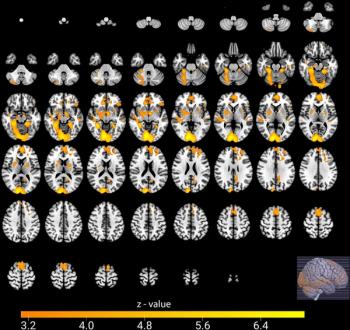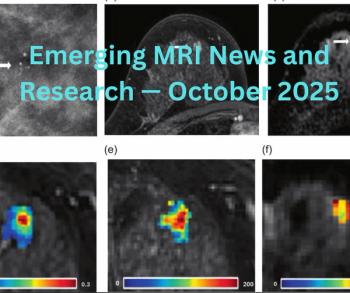
Brain MRI Shows Patterns in Patients with Depression, Anxiety
MRIs show common structural abnormalities among patients with depression and anxiety.
Magnetic resonance images have shown a common pattern of structural abnormalities in the brains of people with major depression disorder (MDD) and social anxiety disorder (SAD), according to a study to be presented at
Researchers from China used MR imaging to directly compare the brain structure between MDD and SAD, by assessing cortical thickness alterations between non-comorbid medication-naïve MDD patients and SAD patients.
Thirty-seven patients with non-comorbid MDD, 24 with non-comorbid SAD, and 41 healthy controls underwent high resolution T1 weighted images of their brain. The researchers performed vertex-based analysis of cortical thickness and group differences were compared by ANOVA analysis followed by post-hoc analysis.
The results showed both MDD and SAD patients, relative to HC, showed cortical thickening in the bilateral medial prefrontal cortex, posterior dorsolateral prefrontal cortex, insular cortex, left temporal pole, and right superior parietal cortex. There was cortical thinning in the left lateral orbitofrontal cortex (OFC) and bilateral rostral middle frontal cortex.
In addition, patients with MDD showed specifically greater thickness in left fusiform, right lateral occipital cortex; thinner thickness in bilateral lingual, and left cuneus. The patients with SAD showed specifically thinner cortical thickness in the right precentral cortex.
The researchers also found significant negative correlations between HAMD score and cortical thickness in the left superior frontal cortex, right caudal medial frontal cortex and right insula among those in the MDD group.
The researchers concluded that MDD and SAD share a common pattern of gray matter abnormalities in sacilence network and dorsal attention network.
“Our findings provide preliminary evidence of common and specific gray matter changes in MDD and SAD patients," study author Youjin Zhao, MD, PhD, from Sichuan University in Chengdu, China, said in a release. "Future studies with larger sample sizes combined with machine learning analysis may further aid the diagnostic and prognostic value of structural MRI."
[[{"type":"media","view_mode":"media_crop","fid":"64504","attributes":{"alt":"","class":"media-image","id":"media_crop_5303405781236","media_crop_h":"0","media_crop_image_style":"-1","media_crop_instance":"8248","media_crop_rotate":"0","media_crop_scale_h":"0","media_crop_scale_w":"0","media_crop_w":"0","media_crop_x":"0","media_crop_y":"0","style":"height: 225px; width: 450px;","title":"Significant cortical thickness differences among the three groups. All regions survived clusterwise-correction (p
Newsletter
Stay at the forefront of radiology with the Diagnostic Imaging newsletter, delivering the latest news, clinical insights, and imaging advancements for today’s radiologists.



























